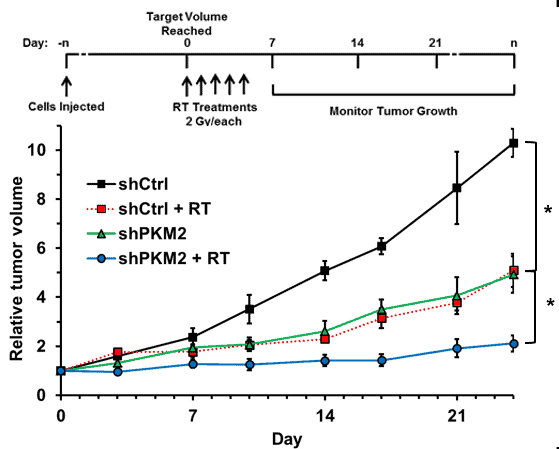
Lithium enhances repair of IR-induced DSBs in hippocampal neurons.

Lithium enhanced the percentage of cells with IR-induced T2609 foci in mouse HT-22 neuronal cells via induction of DNA-PK dependent NHEJ repair.

Inhibition of the PKM2 gene (accompany 2 Gy/each radiation) will significantly decrease the tumor volume.

Inhibition of the PKM2 gene (accompany 4 Gy/each radiation) will significantly increase the survival.

Population with higher PKM expression will have lower survival.

Imagological and histological examination with shPKM2.






“Tennessee” the lab mascot
